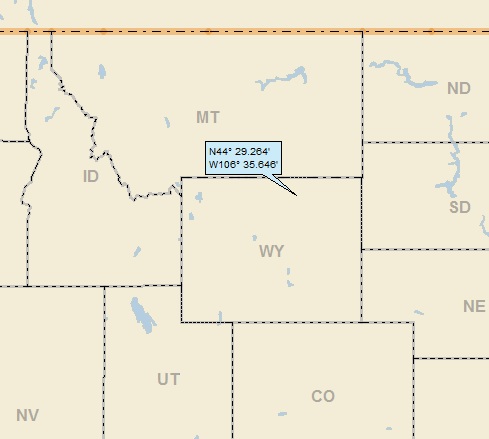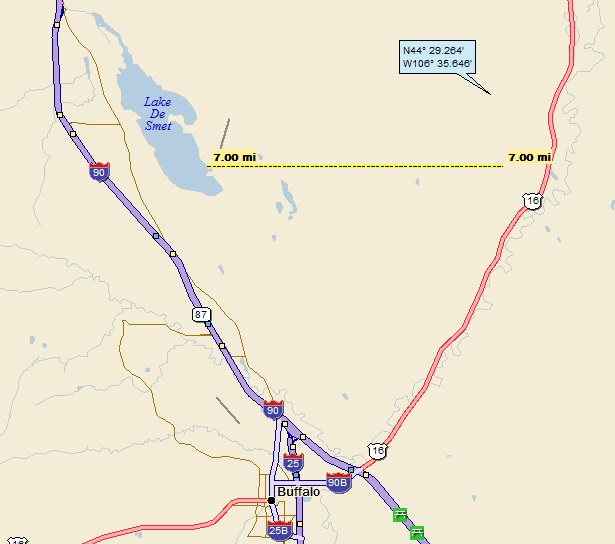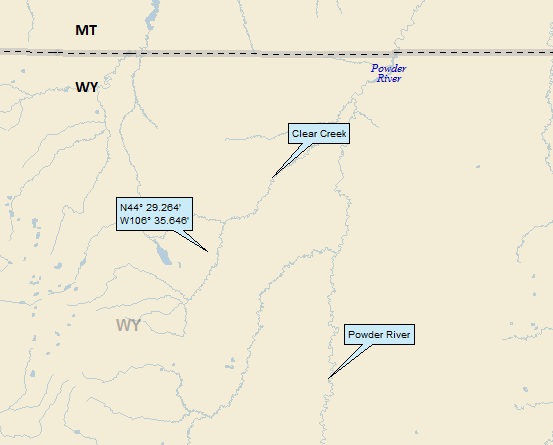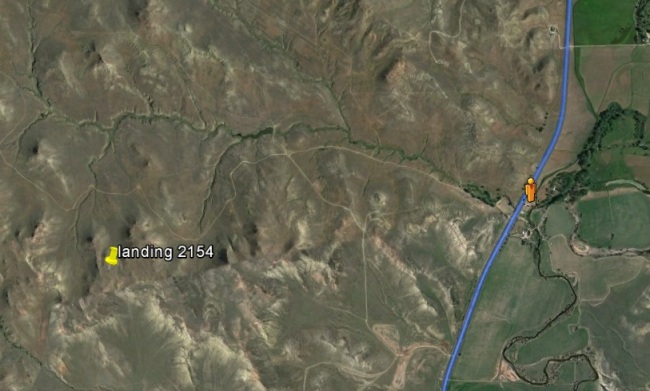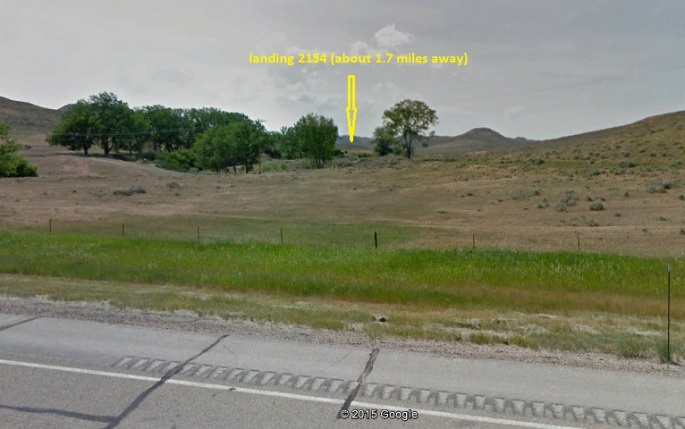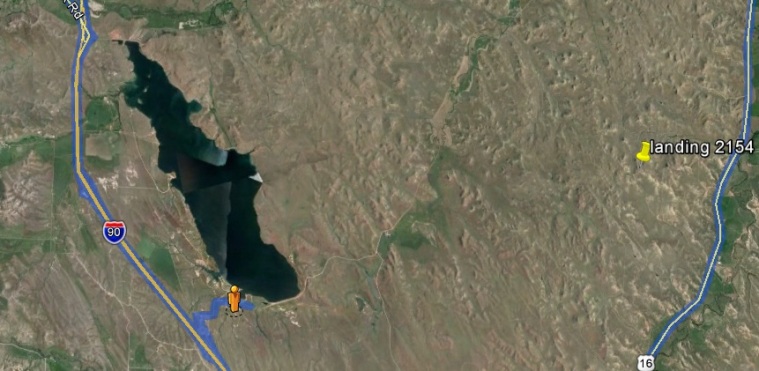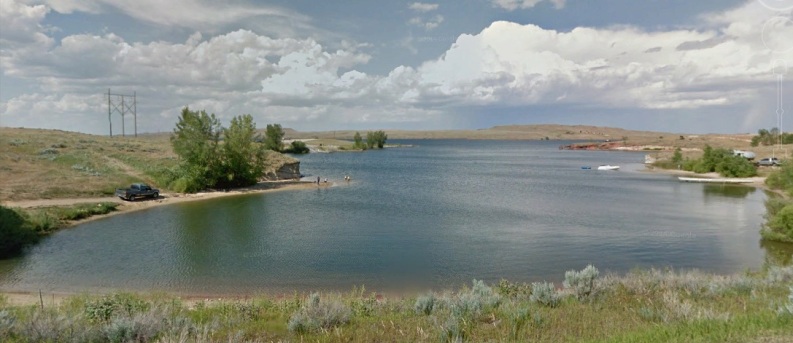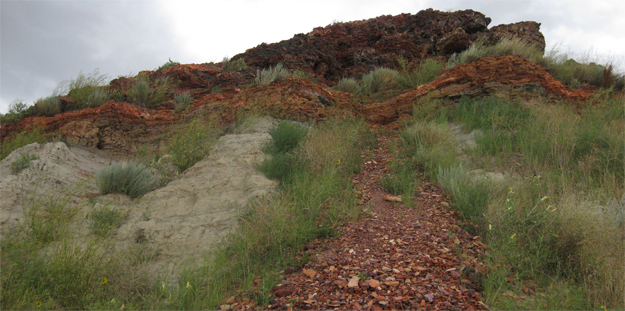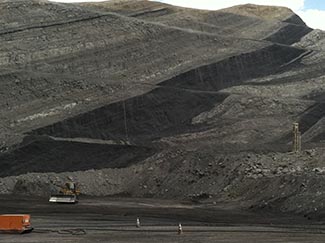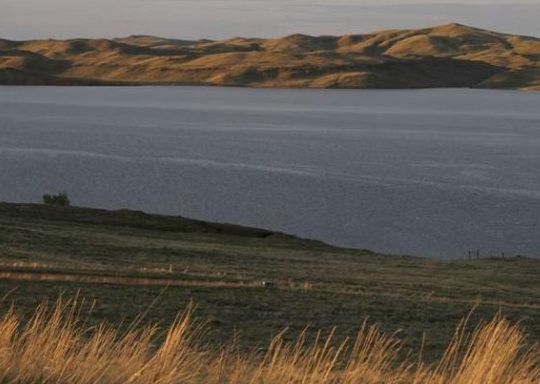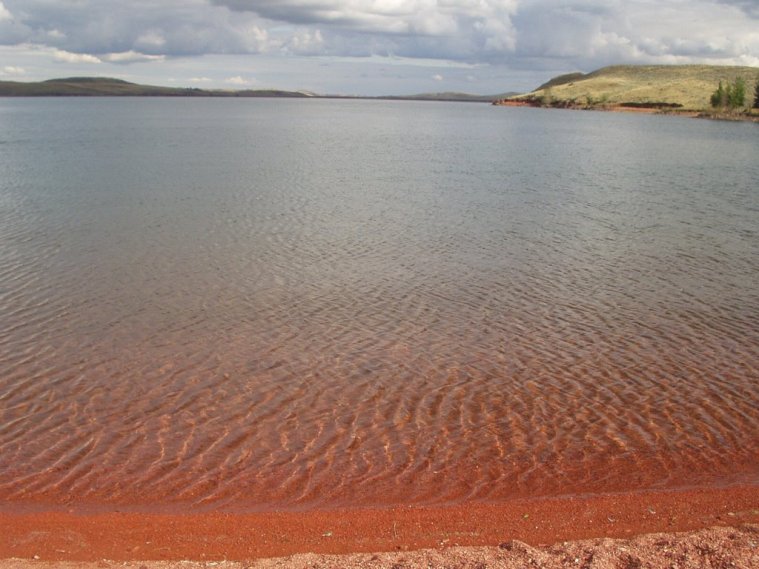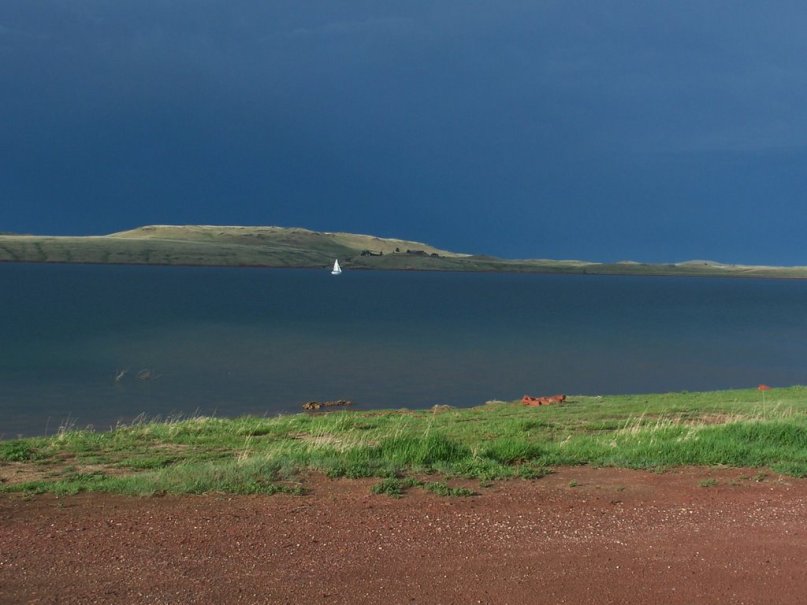First timer? In this formerly once-a-day blog (and now pretty much a once-every-three-or-four days blog), I have my computer select a random latitude and longitude that puts me somewhere in the continental United States (the lower 48). I call this “landing.” I keep track of the watersheds I land in, as well as the town I land near. I do some internet research to hopefully find something of interest about my landing location. To find out more about A Landing A Day (like who “Dan” is and what the various numbers and abbreviations mean in the first paragraph), please see “About Landing,” (and “Abbreviations” and “Cryptic Numbers”) above.
Landing number 2159; A Landing A Day blog post number 587.
Dan: Today’s landing marks the 47th straight western / midwestern landing (and rubbing salt in the wounds, it’s an OSer that bumps me back over 150). . . NV; 87/78; 3/10; 25; 150.3.
Here we go again. 47 landings in a row that haven’t touched the east? Just like my last several posts, I’ll do the statistics: Each landing, I have a 0.82 chance of a western / midwestern landing. Raise that number to the 47th power (and then take the inverse) and I get one chance in 11,240 that I would not land in the east for 47 straight landings!!! Phew. . .
Here’s my regional landing map:
Here’s a very local landing map:
Note Mt Tenabo, and the crazy patchwork of “roads” just west of the mountain. It turns out that the roads are part of the Cortez Mine, which ends up being featured later in this post.
I backed out some to show the isolation of my landing spot:
Incidently, I had a “Beowawe” post a while back (March 2009 to be more specific). Of course, it’s chock full of fascinating information. Feel free to check it out via the search tool. Here’s my watershed analysis, showing that I landed in the Pine Creek watershed; on to the Humboldt River (25th hit). For the record, the valley I landed in (with Pine Creek) is known as “Pine Valley.”
Zooming back a little, here’s a look at the entire Humboldt Watershed:
I added the Reese River for completeness’ sake, even though it has nothing to do with this landing. Interestingly enough, while I’ve landed in the greater Humboldt watershed 25 times, I’ve only landed in the Reese River watershed once! Seems peculiar, given how long the Reese River is.
Here’s my Google Earth (GE) landing voyage:
Here’s my usual GE shot showing Street View coverage:
Here’s the shot from the orange dude standing on Route 278:
I realized that Route 278 continues north and ends up close to where Pine Creek empties in the Humboldt River. Just for the heck of it, here’s a Street View shot from Route 278 (with Pine Creek directly adjacent), looking north to the Humboldt Valley:
Here’s a shot of Mt Tenabo (from ColoradoCollege.edu), likely taken not far from my landing, looking west:
From Wiki, about Mt Tenabo:
Mount Tenabo (Shoshoni: “Lookout Mountain”) is the principal peak in the Cortez Mountains. The Western Shoshone people assert that the mountain is of cultural and religious significance.
Silver ore was discovered at Mount Tenabo in 1862 and by the later half of the 1860s, there were at least 20 working silver mills. Silver remained the principal mining commodity until the 1940s, when gold mining took over.
The Cortez Gold Mining operation opened in 1968, and is currently owned and operated by Barrick Gold. Since 2008, the Timbisha Shoshone tribe has been attempting to halt the expansion of the mine, saying that the damage to the land is irreversible and prevents the use of the lands for religious purposes. The matter is still in the court system.
Back with GE, here’s an oblique shot looking east past Mt. Tenabo towards my landing:
See the 2.5-mile scar on the landscape? That’s the Cortez Mine discussed above, owned and operated by Barrick Gold, the world’s largest gold producer.
They have an extensive website that includes a full presentation of their Cortez operations (which includes surface pit mining and an underground operation). Here’s a cool picture of a fancy schmancy piece of underground mining equipment:
Here’s one of blasting in the pit, with Mt. Tenabo in the background:
Here’s an overview shot of the pit, looking west:
Wow. Check out this cool picture of a big truck:
And here’s a shot of the big trucks hauling ore to be processed (or hauling waste rock to be put wherever it is that they put it):
Here’s some of a company write-up about the mining operations:
Cortez is one of the world’s largest and lowest cost gold mines, and the property also has excellent upside exploration potential. The Cortez property covers approximately 2,800 square kilometers on one of the world’s most highly prospective mineral trends.
The mine produced 1.34 million ounces of gold in 2013 at all-in sustaining costs of $433 per ounce. In 2014, production is expected to be 880,000-920,000 ounces, primarily due to negative grade reconciliations which impacted production in the first half of 2014.
All-in sustaining costs are expected to be at the high end of the range of $750-$780 per ounce. In 2015, production is expected to be below one million ounces due to the sequencing and mining of ore and waste phases.
Proven and probable mineral reserves as at December 31, 2013, were 11.0 million ounces of gold.
Click HERE to go to Barrick’s page about the Cortez Mine.
Wow. Pretty high finance going on here. I looked up “all-in sustaining costs” and it is (I think) a comprehensive measure of the costs associated with producing an ounce of gold. From Nasdaq, here’s a graph of gold costs over the last 3 years:
Check out 2013. Prices were falling, but it still looks like they averaged about $1,400/oz. Wow. With all-in costs of only $433 for 2013, it looks like they made a few bucks (especially considering that they mined 1.34 million ounces).
OK, OK, so profits were way down in 2014. But still!
Anyway – want to work there? Here’s their promotional video about Cortez (actually very well done):
Enough about the mining operation. There’s still the sticky issue of sacred Indian lands.
Here’s what Earthworks“No Dirty Gold” (a webpage associated with the Western Shshone Nation) has to say:
Barrick Strikes Gold
In 2005, the Bureau of Land Management (BLM) approved Barrick Gold’s request to explore 30,000 acres in an area around 15 miles from Mt. Tenabo, a site sacred to the Western Shoshone nation located in Nevada. Barrick Gold’s activities disturbed 250 acres of nationally recognized cultural historic sites.
Then in 2008, Barrick sought approval from the BLM for expansion of the Cortez gold mine directly onto Mt. Tenabo. The Cortez Hills Expansion Projection includes a new open pit, three new waste rock facilities, a new heap leach pad, new roads and facilities and the permanent loss of 817 acres of pinion trees.
Members of the Shoshone fear that project approval would threaten sacred Shoshone gravesites, disturb ritual grounds, harm important water sources, and reduce access to pine nuts, a traditional Western Shoshone food source that are harvested from the pinion trees.
In December, 2008, the BLM approved Barrick’s Cortez expansion onto Mt. Tenabo. A year later, a federal appeals court issued an injunction to halt the mine, determining that the tribes had shown that the mine expansion would likely violate the National Environmental Policy Act.
However, this injunction was lifted in 2012, after a court found that Barrick Gold had corrected potential violations. The tribe is considering appealing this decision.
Click HERE to see the No Dirty Gold site about the mine.
As is my custom, I’ll leave the controversy alone, except to say that nothing is easy and straightforward when there’s a clash of interests, values and cultures . . .
I’ll close with this GE Panoramio shot by Desert4wd, of Mineral Hill, an old mining area, taken about 10 miles east of my landing:
That’ll do it.
KS
Greg
© 2015 A Landing A Day










































































